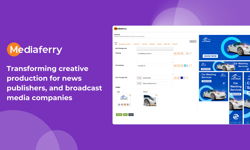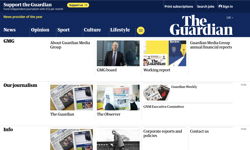According to Mail Connected: Despite print and online readers traditionally being viewed as distinctly separate groups with a limited crossover, research conducted by the Future Foundation and Relish Research illustrates that all Mail readers are ‘information superhighways’ with a thirst for knowledge and extended family and social networks with whom they share advice and information.
They are interested in a wide range of topics and evaluate what they read in a considered and objective way. They love to pass on news, special offers, promotions and brand recommendations either by cutting items out of the paper or emailing others links to stories and special offers.
The study also shows:
• Mail users have larger than average numbers of friends, family members and colleagues. Print readers have an average of 6.2 family members (compared to national average of 5.3 family members); online users have 23.1 friends and colleagues (compared to 21.3 friends and colleagues).
• Mail readers feel a duty of care for their families and friendship groups and frequently offer them advice about products, services, social trends and news.
• Mail print and online users give advice or information to other people at almost double the rate of the average person (over 214.8 times a year, compared to the national average of 140.7 times a year).
• In total 3.4 billion pieces of advice or information has been given by Mail readers over the last 12 months.
Statistics show that Mail readers spread influence in two distinctly different directions. Mail print readers spread information and influence vertically - upwards to their parents and downwards to their children and possibly grandchildren. This is because the current economic climate means that families often co-habit together far longer than previously, with children leaving home later and grandparents becoming more involved in frontline childcare.
In contrast, Mail Online users spread information to large horizontal networks of friends and colleagues. They tend to be people who expect to be ‘in the know’ and are very keen to pass on information and gossip during so-called ‘water cooler’ moments.
As well as sharing news stories, Mail consumers are adept at passing on information about brands and products and value the advertising that they see in their trusted Mail brand.
This makes Mail consumers particularly valuable to planners seeking to engage audiences with their brands.
• The average Mail brand reader has a higher sphere of influence online compared to the national average:
• 185 Facebook friends compared to the national average of 168 friends
• 138 Twitter followers compared to the national average of 110 followers
• 85 Google Plus followers compared to the national average of 48 followers
Rosemary Gorman, Group Advertising Director of Mail Newspapers said of the research: “We wanted to try and understand whether there was a core to the Mail consumer which pertains across all of the brand’s manifestations. The findings from our research proved that there is a core asset which unites the consumers of all of our products – that of influence.
“Everyone knows someone who reads the Mail and everyone will have an opinion of who they think our readers are. Traditionally it has been assumed they are middle aged or older, Middle Britain, and conservative with a small “c”. But our research proves that both print and online readers are dynamic, ambitious and share great influence in their family and social networks.
“Of course, Mail Online readers make up a comparatively younger audience than print readers. Our research shows that see Mail Online as addictive and they require at least one fix day which they thoroughly enjoy. This might explain why Mail Online is now the biggest news and entertainment site in the world which reaches an unparalleled international audience.”










